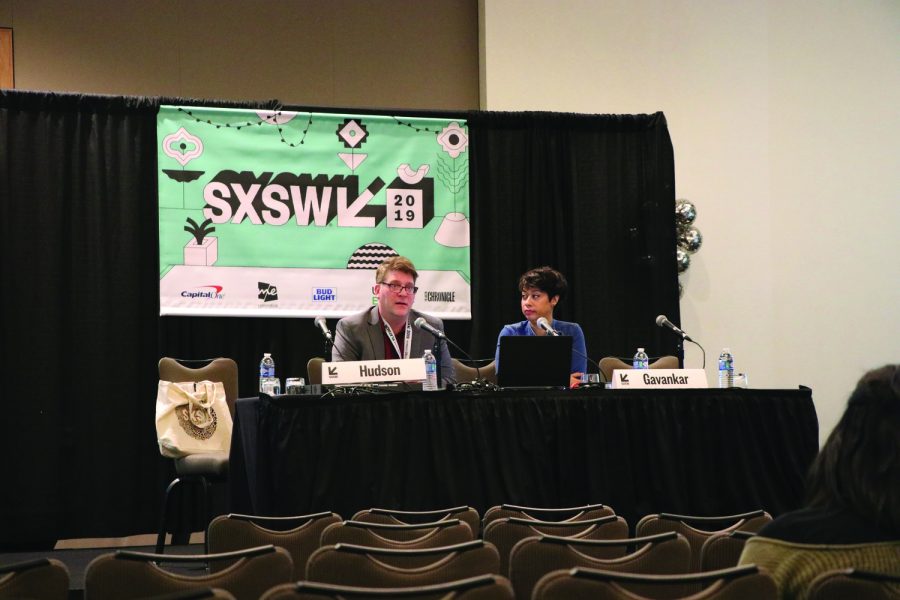Students vs fake news
David Hudson, a First Amendment Expert and employee of the Freedom Forum, and Sonya Gavankar, manager of publc relations for the Newseum, hold a panel on student journalism’s role in fighting fake news. photo by Jordan Jewell
April 9, 2019
These days, things are never straightforward in America. With all the advanced communication and access to factual information modern technology grants us, the truth in current affairs is often hidden, tucked between mass misconceptions and Facebook ads. Meanwhile, society basically regresses into what seems like a puddle of questionability. Whether or not to accept the information journalism offers has become a choice, rather than a standard course of action, for many Americans. That is, it will be, if we cannot find a way to push accurate journalistic standards into as many hands as possible, and to separate veracity from falsity.
At this year’s SXSW, over 80 sessions focused on media and journalism–and that number is only rising. As the state of US politics grows increasingly contentious, more journalists are working together to reduce the amount of misinformation flooding news cycles every day. Not only that, but some of these journalists are coming from unexpected places.
“What we are seeing is a rebirth of student activism,” David Hudson said at a SXSW panel entitled Student Journalists: Oasis in Today’s News Deserts. “We’ve seen students who care largely about what is happening in their communities, who care deeply about gun laws and legislation.”
Hudson, a First Amendment expert who works for the Freedom Forum Institute, spoke with Sonya Gavankar, the manager of public relations for the Newseum in Washington, DC, on Tuesday, March 12. The two discussed the importance of student journalism.
“[Students] are more likely to ask questions because they have less to lose,” Gavankar said. “So they ask the tough questions.”
Though students have less to lose regarding their jobs, their futures are affected by current decisions. Therefore, the weight they attach to the spread of correct information is vast. In response, the percentage of people relying on high school or university is increasing. According to a study at the Pew Research Center, 7% of news from US state houses comes from University newspapers. And while that is a small percentage, physical newspapers still take up the majority of state house news outlets, at 38%.
“Students’ awareness is really the reason first amend rights are so important,” Hudson said. “They’re helping break important news stories, and there’s almost no false information out out that isn’t immediately rectified.”
In addition, getting people to recognize authenticity where they can is also a battle that might be won. Within the large amount of SXSW panels about journalism, many SXSW events this year covered accuracy in journalism, like the March 5 panel, “BE MEDIAWISE: TEACHING STUDENTS TO STOP HOAXES.” This panel, showcased at SXSW EDU, “focused on helping teens learn fact-checking and verification techniques from expert fact-checkers fighting against the spread of misinformation.” Another, Media Literacy Today: The Real Impact of Fake News, worked to “benefit participants who are interested in learning how to process media and make effective change.”
“This kind of civic education should be mandatory,” Hudson said. “People have to understand why the constitutional rights are so important.”
With more and more sessions added each year and student newspapers gaining more of an audience, ‘amateur’ journalism could very well be the “Oasis in Today’s News Deserts.”
“What we’ve seen is students demanding first amendment rights,” Hudson said. “We have to bridge the gap between traditional news reporters and student journalists.”


